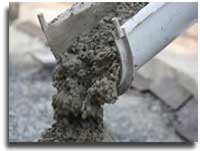Cement Manufacturers' Association (CMA) is the most important apex body of cement manufacturers in India which was established in 1961. It is a unique body in as much as it has been both the private and public sector cement companies as its members. It is a registered body which is under the Societies Registration Act. Its registered office is in New Delhi, Corporate Office in Noida, Branch offices are in Mumbai and Hyderabad.
MAIN OBJECTIVES:
- To promote the growth of the whole of the cement industry.
- To protect the consumer interests and even their adaptability.
- To identify newer applications of cement usage.
- To establish contacts with similar bodies abroad for exchange of information, data, publications, etc.
MISSION:
CMA acts as a bridge between the Indian cement Industry and the Government. It creates a conducive environment which promotes growth of cement industry, through advice and consultation. It closely works with the government and various Regulators on policy issues, enhancing efficiency, competitiveness, growth and development opportunities for Indian cement industry. As a representative organization of the cement industry, CMA articulates the genuine, legitimate needs and interests of the cement industry. Its mission is mostly to impact the policy and legislative environment so as to foster balanced economic, industrial and social development in the cement industry.
Core competencies
- Forum for continuous government-industry interface for evolving a shared vision-on cement industry issues.
- Specialized Think Tank and Committees to address the present and futuristic issues and challenges with respect to the cement industry.
- Database is mostly to provide information to general public, industry and government.
CMA plays a significant role in projecting Indian cement industry to the Government and coordinating various activities in respect of formulation of Government policies for the cement industry through its continuous dialogues and interactions. Represents on all major policy making bodies concerned with cement. Supplies desired information to all concerned Ministries like Commerce, Railways, Coal, and Planning Commission. Supplies material for answers to Parliament Questions. Helps in preparation of important Government documents concerning cement like Reports for Five Year Plans, Special Reports whenever needed, etc. Submits to the Ministry of Industry Weekly Reports on Infrastructure (Coal, Railways, Power) for Cabinet Secretariat meetings. Submits information to Department of Industrial Policy and Promotion (DIPP) on various aspects whenever called for.
Industry:
CMA identifies and strengthens the cement industry's role in the economic development of the country. Provides up-to-date statistical data/information to the industry and other agencies. Interacts for Industry's problems with the Government and co-ordinates various activities with bodies like NCB, FICCI, ASSOCHAM, CII, CAPEXIL, etc. Focusses on infrastructural problems (Rail, Coal, Power, etc) and suggests suitable measures for their solution through representations and meetings with concerned authorities from time to time.
Consumers:
- Creates awareness and supports industry efforts on quality, environment, consumer protection and similar other issues.
- CMA disseminates technical information on various cements produced and their use and also recommends the right variety of cement for different applications.
- Provides technical advice on concrete roads.
- Creates awareness about eco-friendly packaging.
India ranks second in world cement producing countries. The Industry has been facing a chronic problem of insufficient availability of the main fuel coal, driving the manufacturers to resort to use of alternatives at steep cost. Taxes and Government levies on cement are high compared to other countries in the Asia pacific region. Cement Industry, which was branded as the highest polluter of environment, now meets the pollution standards, and is no longer a polluter today.

Contributes to environmental cleanliness by consuming hazardous wastes like Fly Ash (around 30 Mn.t) from Thermal Power Plants and the entire 8 Mn.t of Slag produced by Steel manufacturing units. As a part of Corporate Social Responsibility (CSR), the Cement Industry employs around one lakh people and takes care of the social needs not only of the employees but also adopts several villages around the factories providing free drinking water, electricity, medical and educational facilities. The Cement Industry produces a variety of cement to suit a host of applications matching the world's best in quality.
The Indian Cement Industry exports Cement/Clinker to around 30 countries across the globe and earns precious foreign exchange. The core sector Cement Industry deserves due support from the Government by avoiding imposition of high levies and duties, making available various inputs like fuel, power, transport, etc., at reasonable prices and in required quantities and help its growth and improve competitively both in domestic and international markets.





